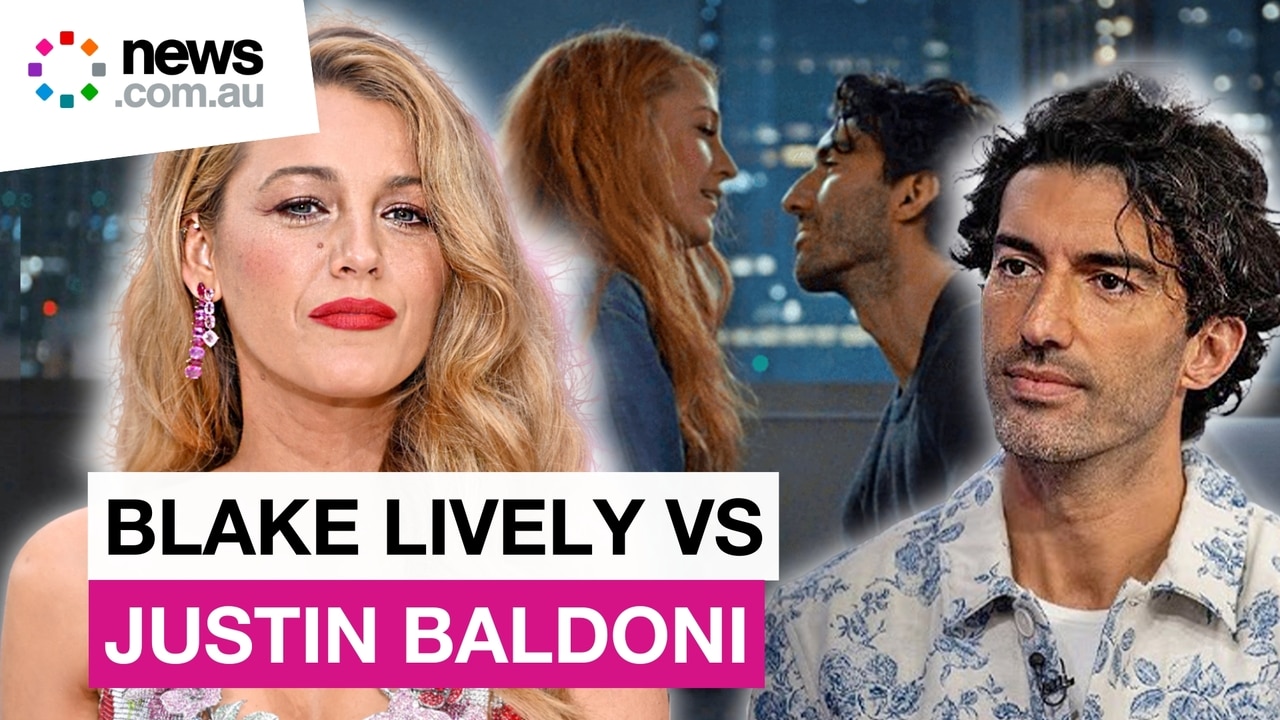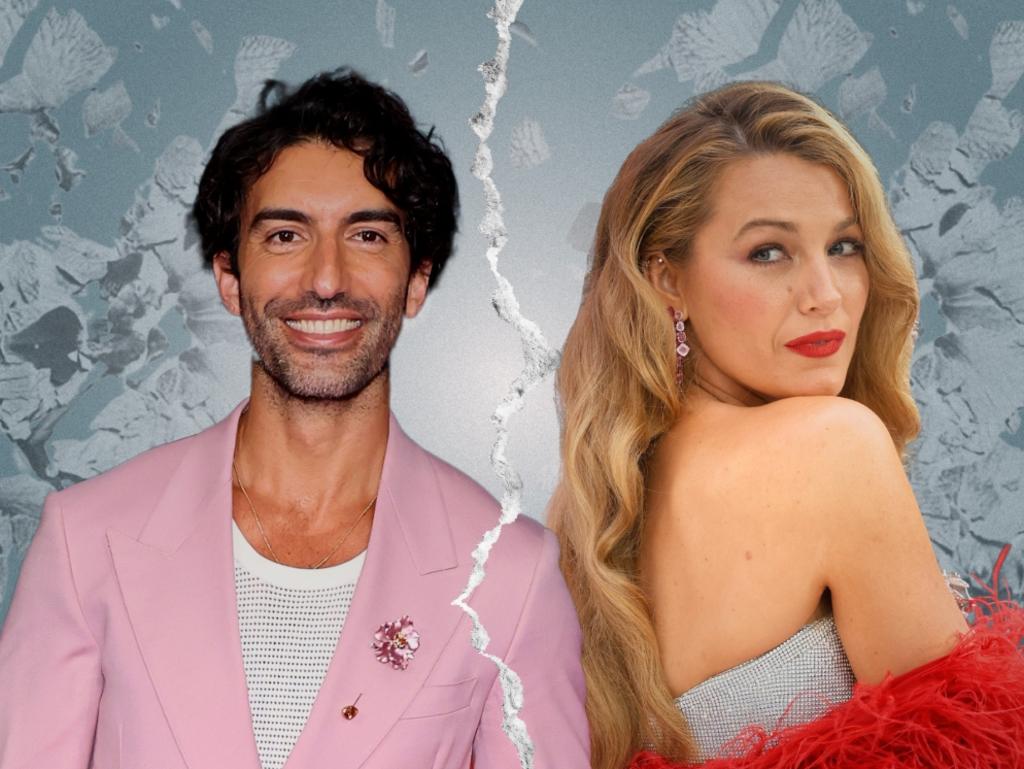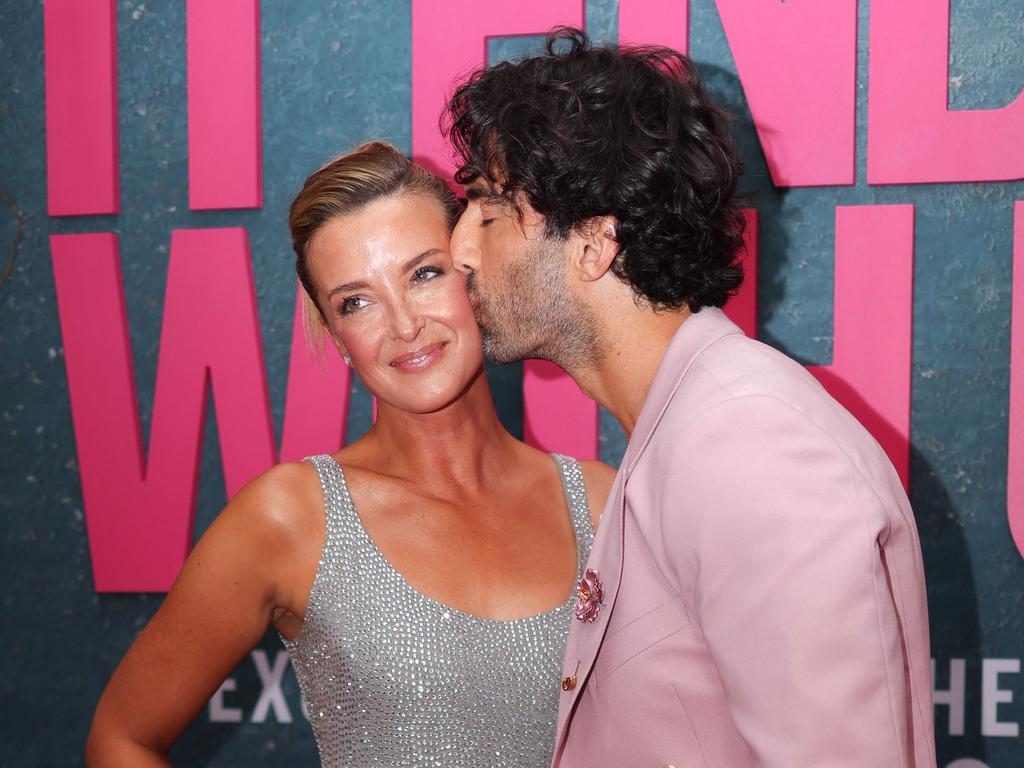It Ends With Us feud between Blake Lively and Justin Baldoni explained
The escalating feud between It Ends With Usco-stars Blake Lively and Justin Baldoni is shaping up as the celebrity legal battle of the decade.

The escalating feud between It Ends With Us co-stars Blake Lively and Justin Baldoni is shaping up as the celebrity legal battle of the decade.
A flurry of lawsuits, claims and counterclaims have now been flung after Lively, 37, accused Baldoni, 40, of sexually harassing her on set and smearing her reputation when she spoke up, while the actor has hit back with a furious denial of the allegations.
For those just tuning in, here is everything you need to know.

What’s this all about?
The controversy relates to the troubled production of last year’s romantic drama film It Ends With Us, based on the popular 2016 novel of the same name by Colleen Hoover.
Touching on themes of domestic violence and gaslighting, it tells the story of florist Lily Bloom (Lively) and her troubled relationship with neurosurgeon Ryle Kincaid (Baldoni).
Baldoni also directed the film, while Lively served as a producer.
It Ends With Us premiered on August 6, 2024 and despite mixed reviews from critics, was a breakout box office hit, grossing $US350 million ($563 million) worldwide on a budget of $US20 million ($32 million).
Rumours of some sort of conflict between Lively and Baldoni began swirling around the time of the film’s release, after social media users noticed they had not appeared at joint press events and avoided each other at the New York premiere.
Sources told The Hollywood Reporter at the time that there was a fracture between the pair during post-production over two competing visions for the final cut of the film — although at that point, neither Lively nor Baldoni commented publicly on the rumours.
Who are these people?
Lively picked up her first major role as a teenager in 2005’s The Sisterhood of the Traveling Pants. She went on to star in CW’s popular teen drama series Gossip Girl from 2007 to 2012. She married Deadpool star Ryan Reynolds, 48, in 2012, and the couple have four children together.
Baldoni began acting in the soap opera The Young and the Restless in 2004 and later starred in the CW series Jane the Virgin from 2014 to 2019. He moved into directing romantic dramas with 2019’s Five Feet Apart and 2020s Clouds. He married Swedish actress Emily Foxler in 2013. The couple have two children.
Other key figures in the (legal) story are Jamey Heath, the film’s lead producer, Baldoni’s long-time PR representative Jennifer Abel, crisis PR expert Melissa Nathan — best known for representing Johnny Depp during his defamation trial against Amber Heard — as well as Stephanie Jones, Baldoni’s former publicist.

What does Blake Lively allege?
Lively’s bombshell claims against Baldoni first emerged in an 80-page letter filed on December 20 with the California Civil Rights Department, which largely formed the basis for a 4000-word article in The New York Times the following day headlined, “‘We Can Bury Anyone’: Inside a Hollywood Smear Machine.”
The article sent shockwaves through Hollywood and led to Baldoni’s talent agency, WME, dropping him as a client within hours.
In the complaint, which is not a lawsuit and therefore typically kept confidential, Lively claimed that she experienced repeated sexual harassment by Baldoni and Mr Heath on the New Jersey set, and that they later orchestrated a smear campaign, led by Ms Abel and Ms Nathan, to discredit her before the allegations became public.
According to Lively’s complaint, Baldoni’s alleged behaviour included attempting to add gratuitous sex scenes to the film, improvising unwanted kissing and discussing his sex life and prior “porn addiction”.
She alleged that both Baldoni and Mr Heath repeatedly entered her makeup trailer uninvited while she was undressed, including when she was breastfeeding. She also alleged that Mr Heath had shown her a video of his wife naked.
Lively’s lawyers laid out her concerns in a November 2023 letter to Baldoni’s production company, Wayfarer Studios, and requested safeguards to return to set including an intimacy co-ordinator, a ban on sexual discussions and a stunt double for scenes involving sexual violence.
In January 2024, she and Reynolds met with Baldoni, Heath and a Sony executive at the couple’s New York penthouse. Wayfarer later agreed to her terms “although our perspective differs in many aspects”, according to her complaint.
As the release of the film neared, Lively and other cast members, as well as Hoover herself, informed Sony and Wayfarer that they would not do any publicity appearances with Baldoni.
By the first week of August, Baldoni had retained Ms Nathan. The other half of Lively’s complaint, based on thousands of pages of text messages and emails obtained via subpoena, alleges Baldoni’s team began planning a media strategy to get ahead of her allegations.
“You know we can bury anyone,” Ms Nathan allegedly wrote.
Lively alleged in the complaint that the Baldoni-Wayfarer team “retained subcontractors … who weaponised a digital army around the country from New York to Los Angeles to create, seed and promote content that appeared to be authentic on social media platforms and internet chat forums”.
In the following weeks, a number of negative viral narratives about Lively emerged on social media, including a resurfaced interview from 2016, reuploaded to YouTube by a Norwegian entertainment reporter on August 10, who titled the clip, “The Blake Lively interview that made me want to quit my job.”
Kjersti Flaa told The New York Times her decision to reupload the clip “was neither co-ordinated nor influenced by anyone associated with the alleged campaign”.

What did Justin Baldoni say?
Baldoni and Wayfarer Studios’ lawyer, Bryan Freedman, previously told Page Six in response to the allegations, “It is shameful that Ms Lively and her representatives would make such serious and categorically false accusations. These claims are completely false, outrageous and intentionally salacious with an intent to publicly hurt and rehash a narrative in the media.”
Mr Freedman claimed his client hired a crisis manager due to the “multiple demands and threats” Lively had allegedly made during production, including “threatening to not showing up to set [and] threatening to not promote the film, ultimately leading to its demise during release, if her demands were not met”.
Mr Freedman called Lively’s suit “another desperate attempt to ‘fix’ her negative reputation, which was garnered from her own remarks and actions during the campaign for the film, interviews and press activities that were observed publicly, in real time and unedited, which allowed for the internet to generate their own views and opinions”.
He also accused her of using her publicist to plant negative stories about Baldoni, claiming his clients’ reps did not retaliate in response to those reports.
“There were no proactive measures taken with media or otherwise, just internal scenario planning and private correspondence to strategise, which is standard operating procedure with public relations professionals,” he said.
Who is suing whom and for what?
On Tuesday, Lively filed a formal lawsuit against Baldoni in New York federal court for alleged sexual harassment, retaliation, breach of contract, infliction of emotional distress, invasion of privacy and lost wages.
The allegations mirror those in the California Civil Rights Department complaint.
In addition to Baldoni, Lively is suing Ms Nathan and Ms Abel.
“Ms Lively previously sent her California Civil Rights Department Complaint in response to the retaliatory campaign Wayfarer launched against her for reporting sexual harassment and workplace safety concerns,” her lawyer said in a statement.
“Unfortunately, Ms Lively’s decision to speak out has resulted in further retaliation and attacks. As alleged in Ms Lively’s federal complaint, Wayfarer and its associates have violated federal and California state law by retaliating against her for reporting sexual harassment and workplace safety concerns. Now, the defendants will answer for their conduct in federal court. Ms Lively has brought this litigation in New York, where much of the relevant activities described in the complaint took place, but we reserve the right to pursue further action in other venues and jurisdictions as appropriate under the law.”
The same day, Baldoni and nine others named in The New York Times’ article filed a $US250 million ($402 million) lawsuit against the newspaper in the Los Angeles Superior Court.
The group, which includes Baldoni, Ms Nathan, Ms Abel and Mr Heath, are suing the newspaper for libel and false light invasion of privacy. The 87-page complaint, obtained by Variety, also accuses The New York Times of promissory fraud and breach of implied-in-fact contract.
Ms Jones, Baldoni’s former publicist, separately filed a lawsuit in the New York Supreme Court against the actor, Wayfarer, Ms Abel and Ms Nathan for breach of contract over the alleged smear campaign, days after Lively’s claims first emerged.

What’s in this $250 million lawsuit?
Baldoni’s lawsuit against The New York Times offers a rebuttal, citing text messages and other evidence, to a number of the specific allegations in its 4000-word piece.
On the allegation that he entered Lively’s trailer uninvited, including when she was breastfeeding, the suit quotes a text exchange between the pair on June 2, 2023.
“I’m just pumping in my trailer if you wanna work out our lines,” she texted, after a discussion about updated script pages.
“Copy. Eating with crew and will head that way,” he replied.
Addressing Lively’s allegation that Mr Heath showed her a video of his naked wife, which the California Civil Rights Department complaint described as “pornography”, the suit offered an alternative explanation.
“This claim is patently absurd,” the lawsuit says.
“The video in question was a (non-pornographic) recording of Heath’s wife during a home birth — a deeply personal one with no sexual overtone. To distort this benign event into an act of sexual misconduct is outrageous and emblematic of the lengths to which Lively and her collaborators are willing to go to defame plaintiffs.”
The suit adds that the video was shown to Lively as part of a creative discussion regarding a birthing scene.
The discrepancies are among a number highlighted in the suit, which alleges the newspaper’s reporting relied on “‘cherrypicked’ and altered communications stripped of necessary context and deliberately spliced to mislead”.
It states that it was Lively who allegedly embarked on a “strategic and manipulative” smear campaign, using false “sexual harassment allegations to assert unilateral control over every aspect of the production”.
Defending Ms Nathan and Ms Abel’s methods, the lawsuit describes their actions as “standard industry practice”. It insists the women were merely preparing “for worst case scenarios (based on Lively and Reynolds’ prior behaviour)” and that “no aggressive tactics (e.g., astroturfing) were ever employed”.
Baldoni’s lawsuit also accuses Reynolds of allegedly berating him during the heated January meeting at their Tribeca penthouse, in which he accused the director of “fat shaming” his wife.
He also claimed Reynolds pressured WME to drop him — allegedly during the Deadpool and Wolverine premiere in July, which took place before Baldoni hired his crisis PR team. A WME rep denied the accusations that Reynolds or Lively pressured the company to drop Baldoni as a client.
Mr Freedman, who filed the lawsuit on behalf of the plaintiffs, told Variety that The New York Times “cowered to the wants and whims of two powerful ‘untouchable’ Hollywood elites, disregarding journalistic practices and ethics once befitting of the revered publication by using doctored and manipulated texts and intentionally omitting texts which dispute their chosen PR narrative”.
A spokesperson for The New York Times told Variety that the story was “meticulously and responsibly reported”.
“It was based on a review of thousands of pages of original documents, including the text messages and emails that we quote accurately and at length in the article,” they said.
“To date, Wayfarer Studios, Mr Baldoni, the other subjects of the article and their representatives have not pointed to a single error. We published their full statement in response to the allegations in the article as well. We plan to vigorously defend against the lawsuit.”
— with NY Post
More Coverage
Originally published as It Ends With Us feud between Blake Lively and Justin Baldoni explained





